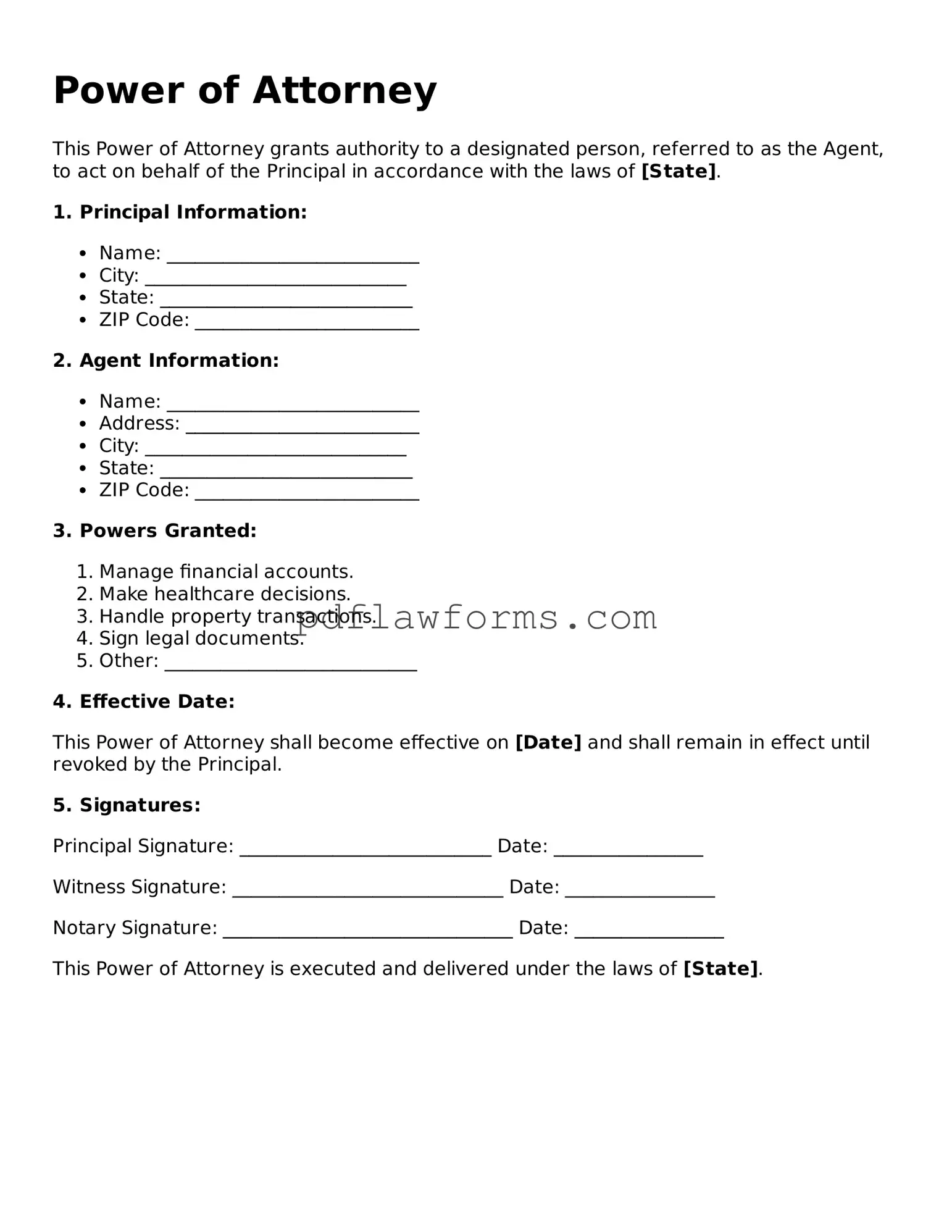Filling out a Power of Attorney (POA) form can be a straightforward process, but many people make common mistakes that can lead to complications. One frequent error is failing to specify the powers granted. A POA should clearly outline what authority the agent will have. Without this clarity, the agent may not be able to act effectively on behalf of the principal.
Another mistake is not signing the document properly. Each state has specific requirements regarding signatures and witnesses. If these requirements are not met, the POA could be deemed invalid. It's essential to check local laws to ensure compliance.
Some individuals overlook the importance of selecting the right agent. Choosing someone who is not trustworthy or lacks the necessary skills can lead to mismanagement of affairs. It’s crucial to select an individual who is reliable and understands the responsibilities involved.
Additionally, many people forget to date the document. A POA should include the date it was executed to establish when the authority takes effect. Without a date, there could be confusion about the validity of the document.
Another common oversight is neglecting to revoke previous POAs. If a new POA is created without revoking the old one, conflicts may arise. It’s vital to formally revoke any prior documents to ensure that the most current POA is the only one in effect.
Some individuals also fail to communicate their intentions with the agent. It’s important to have a discussion about the powers granted and the principal's wishes. This conversation can prevent misunderstandings and ensure that the agent acts in the principal's best interests.
Finally, not storing the document properly is a significant mistake. A POA should be kept in a safe place, and copies should be provided to relevant parties, such as the agent and financial institutions. Without proper storage, the document may not be accessible when needed.
